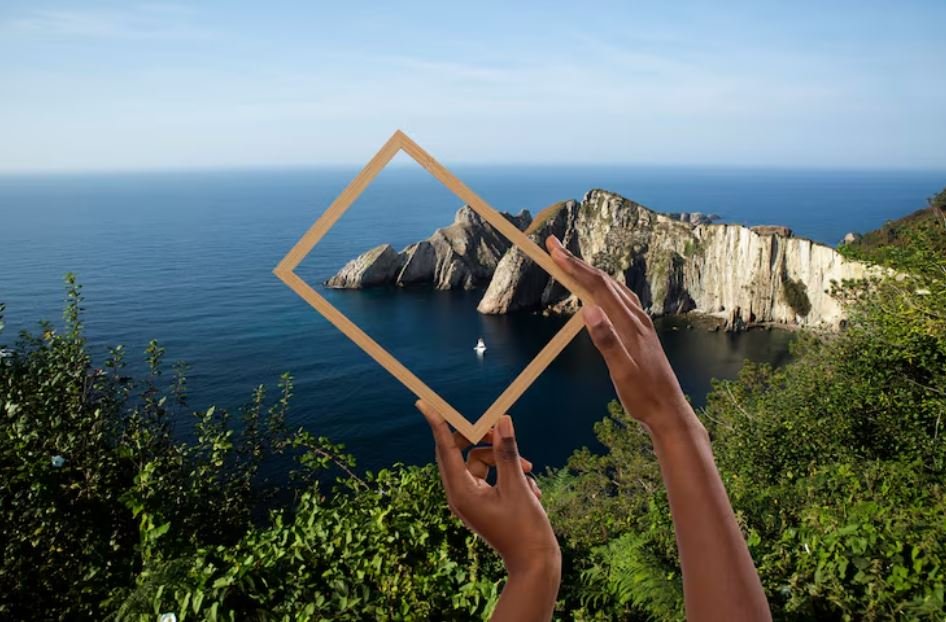
Architects are changing the way we construct under pressure on both coasts and oceans. Rebuilding Paradise requires fortitude, empathy, and foresight rather than luxury. Using nature as both a partner and a blueprint, architects are now creating climate-proof islands that appear to foresee disaster rather than just survive it.
The 2018 Camp Fire at Cal Poly’s College of Architecture marked the beginning of the story. Students were motivated to rethink how entire towns could emerge stronger and more resilient after the destruction in Paradise, California. They created earth-block buildings that can withstand fires, generate their own electricity, and collect rainwater under the direction of Professor Stacey White. Instead of trying to recreate what had been lost, they wanted to build something incredibly stronger and more interconnected.
| Aspect | Description |
|---|---|
| Purpose | To create self-sufficient, resilient island communities that can adapt to climate challenges and rising seas. |
| Core Design Strategies | Elevated foundations, hurricane-resistant materials, floating structures, and native vegetation. |
| Renewable Energy Focus | Solar panels, wind turbines, microgrids, and rainwater harvesting for sustainable living. |
| Sustainability Goals | Lower emissions, restore biodiversity, and promote circular resource systems. |
| Influential Projects | Cal Poly’s “Rebuilding Paradise,” Rotterdam’s floating pavilion, and Ralston Architects’ island designs. |
| Architectural Leaders | Ralston Architects, SOM, Cal Poly’s CAED, and AIA Resilience Committee. |
| Societal Impact | Encouraging climate adaptation while empowering communities to rebuild smarter and stronger. |
| Innovation Drivers | Integration of local knowledge with cutting-edge engineering and ecological design. |
| Emerging Trend | Combining Indigenous techniques with modern technology for adaptive architecture. |
| Reference Source | Cal Poly College of Architecture – https://caed.calpoly.edu |
These future architects found that just as much empathy as technical skill was needed to rebuild paradise. They designed spaces that could heal physical and emotional wounds, talked to survivors, and listened to their memories. A fire station was transformed into a community gym, a representation of resiliency masquerading as leisure. It was architecture that gave the ashes new life.
Similar concepts are being applied to coastal and island areas thousands of miles away by architects such as those at Ralston Architects and SOM. Particularly creative are their climate-proof designs, which include homes anchored on buoyant platforms that rise with the tide, seawalls that serve as walking trails, and elevated villas with solar roofs. A deep understanding of the fragility of the environment influences every choice, from landscaping to material selection.
The floating pavilion has become a representation of adaptive architecture in Rotterdam, a city renowned for its engineering prowess. It is powered solely by renewable energy and is constructed on a buoyant base that moves gently with the water. Residents merely fortify their houses and allow them to float a little higher during storms—a beautiful fusion of natural rhythm and human design. Since then, cities like Singapore and Copenhagen have been influenced by this concept, demonstrating that coexisting with water can be both sustainable and surprisingly tranquil.
Resilience is also being redefined in the private sector. Luxury island estates that are both aesthetically pleasing and functional are being designed by firms like Ralston Architects. Native trees prevent soil erosion, and raised foundations guard against flooding. Independence during storms is ensured by off-grid systems, which include solar arrays, wind energy, and water purification. “True luxury is resilience—the ability to endure without fear,” as founder Paul Ralston famously observed.
Nowadays, the strongest kind of prestige is sustainability. Homes that are environmentally conscious and energy-positive are now in high demand from wealthy clients. Richard Branson used massive solar systems and hurricane-proof roofs to rebuild Necker Island after hurricane damage. His decision represented a larger cultural shift, with sustainability as status and resilience as the new luxury.
These designs are based on a philosophy that is remarkably similar to the lessons discovered in Paradise, California. When Cal Poly students showcased their work to the community, they were offering more than just structures—they were offering a sense of community. Their models included community centers that brought people together after tragedies and homes with cross-ventilation to save energy. The method was incredibly effective and incredibly human, establishing a very clear connection between empathy and design.
These concepts are now being applied to the sea itself by contemporary architects. Modular villages in the Maldives, amphibious homes in Thailand, and floating schools in the Netherlands are demonstrating that adaptation can be tasteful. These designs are predictive, prepared for an already-imminent future, by modeling flood patterns using artificial intelligence, renewable energy, and recycled materials.
In the meantime, resilience is being formalized by academic institutions and design committees, such as AIA’s Design for Risk and Reconstruction group. In order to guarantee that safety and sustainability are integrated from the beginning, their guidelines now mandate property resilience assessments in building certifications. “It’s not about avoiding risk; it’s about designing around it,” one architect said.
The discussion has expanded well beyond scholarly circles. The rise of “aquapreneurs,” or architects and investors who view floating communities as the next evolution of habitation, has been documented by environmental thinkers such as Nikolas Kozloff. While some of these concepts are undoubtedly radical, others—like those in South Korea and the Netherlands—are starting to show us how we can prosper in the face of environmental uncertainty.
Hollywood has joined the story as well. Rebuilding Paradise, a documentary by Ron Howard, demonstrated how tragedy can result in rebirth. Echoing the optimism found in coastal design studios across continents, it followed Camp Fire survivors as they bravely and creatively rebuilt. There is a poignant connection: the spirit of rebuilding is the same whether dealing with flood or fire: defiance through design.
Architecture is evolving into a storytelling medium that uses form and materials to tell stories about resilience. The message of adaptation is conveyed by every reinforced wall, floating deck, and solar roof. It’s about maintaining culture, community, and continuity, not just about safeguarding property.
This is a mission that many architects find personal. They are now creating with continuity—the hope that future generations will still find beauty where others saw loss—in mind, rather than just comfort. They are rebuilding hope through creativity, compassion, and tenacity, not just building structures.
Rebuilding Paradise has come to represent our future as a society. It serves as a reminder that tragedy can be effectively turned into progress through architecture. These climate-proof islands are representations of perseverance rather than merely geographical locations. They remind humanity how to start over by floating, rising, and adapting.
